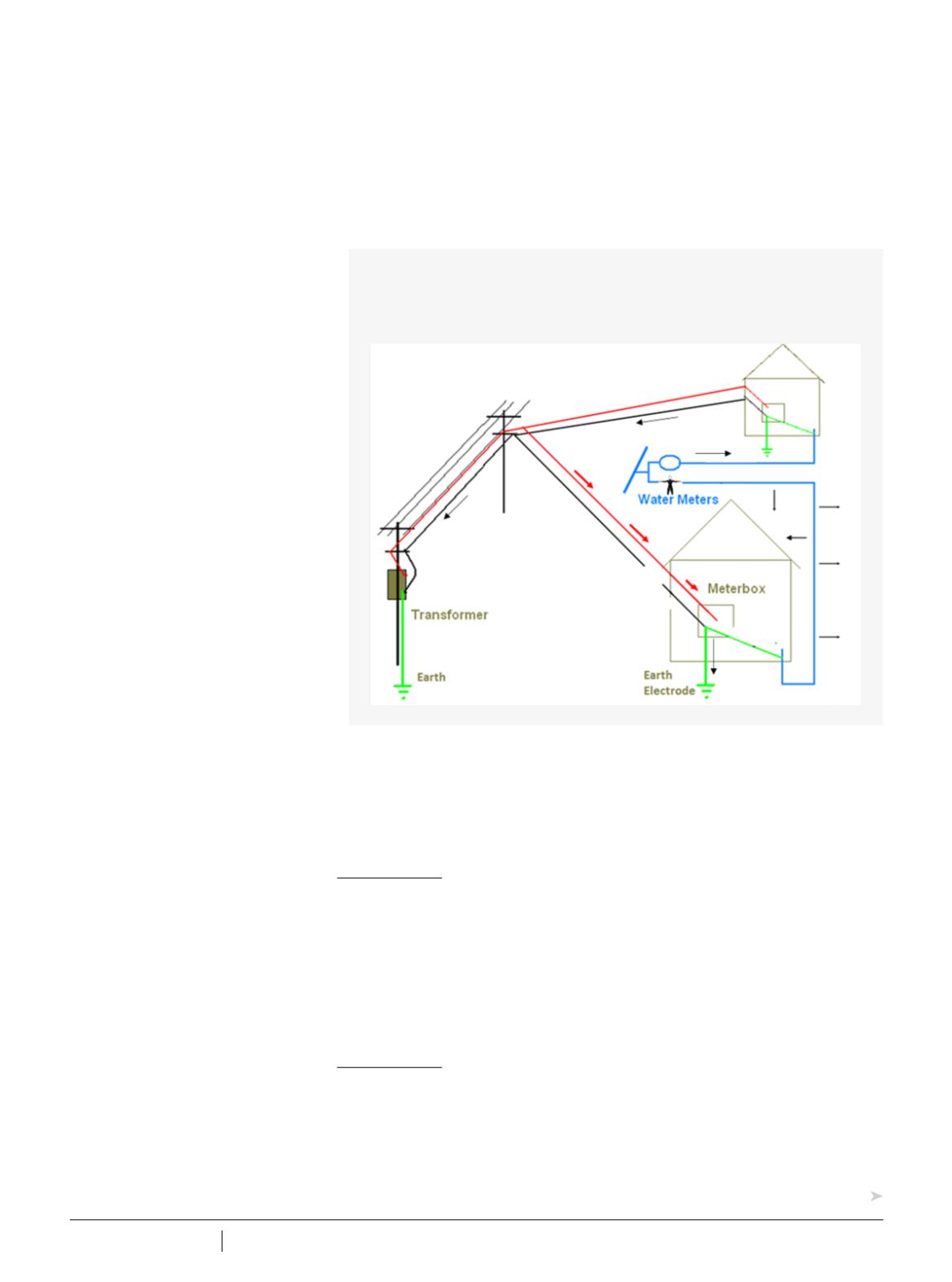

3 6
PLUMBING CONNECTION Winter 2022
ELECTRIC WATERPIPES
M
ost ‘tingle’ incidents from
waterpipes go unreported, but
they serve as a warning for
higher-consequence incidents. Smarter
water authorities and plumbers are
managing this issue, but many aren’t.
This paper looks at the risks, as well as
how the risks occur, and the options to
manage the hazard.
THE RISK
The likelihood of an electrical incident
while working on metallic waterpipes
is somewhere between ‘likely’ and
‘unlikely’, but with catastrophic
consequences. This leaves the risk
between high and extreme, and so the
hazard must be managed.
In plumbing/water authority
situations, AC voltages as low as 3 volts
can cause a person to ‘lock-on’ to the
waterpipe and not be able to let go, and
voltages as low as 24 volts can cause
a person’s heart to go into ventricular
fibrillation.
THE MECHANISM
There are two main mechanisms for
those working on metallic waterpipes to
be killed.
The first, and most common
mechanism, is
because of a faulty
neutral connection
on the incoming
electrical service. This
causes the return
current from the
electrical installation
to travel through
the ground and via
metallic waterpipes
back to the supply
transformer. Work at
one electricity supply
authority some years ago identified
around 2% of older installations had a
faulty neutral connection.
The second mechanism is where
an electrical fault occurs, often in
an appliance or electrical wiring, and
‘livens’ the electrical earthing system
and metallic waterpipes. Generally, the
electrical protection equipment will
operate to remove
the fault, but this is
not always the case.
Porcelain fuses,
which are common in
older properties, may
be shorted with wire
instead of fuse wire.
Circuit breakers and
safety switches can
fail or fail to operate
due to limited fault
current.
Other mechanisms
are equally noteworthy.
A reverse connection on the incoming
electrical service wire coming into a
property can ‘liven’ up the metallic
waterpipes. This is rare but it does
happen. Normally, these are generally
found and rectified quickly but in one
case the reverse connection had been in
place for 16 years.
Another mechanism, again a rare
occurrence, is where the active
conductor in the incoming electrical
service wire into a property shorts to
the neutral conductor, and burns the
neutral off the supply transformer. This
then makes the metallic waterpipes
‘live’.
Lightning also presents a significant
hazard to anyone outside in a storm,
but especially for those working on
metallic waterpipes. Lightning should
never be underestimated and a direct
strike with waterpipes is not necessary
to kill or injure. Waterpipes can be
‘livened’ through the ground and can
even be ‘livened’ through the air by what
is called induction and/or capacitive
coupling.
Metallic waterpipes can become ‘live’ through various methods. There is a low probability of an incident,
writes
Chris Halliday,
but electrocution is a genuine risk.
DIAGRAM SHOWING THE CURRENT PATH WITH A FAULTY
NEUTRAL – PLUMBER CHANGING A WATER METER.
Lightning also
presents a significant
hazard to anyone
outside in a storm, but
especially for those
working on metallic
waterpipes.
ELECTROCUTION -
CHRIS HALLIDAY
















